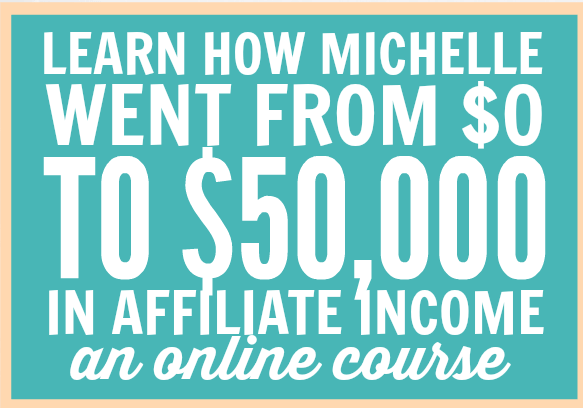When you ask people what they need to do to fix their financial situation, the most common answer is that they need to make more money. While making more money can be helpful, the ability to manage money is actually a lot more important.
If you can’t manage the money you currently have, what makes you think that making more will help?
The majority of financially successful people that I know do not earn six figure salaries. They aren’t wealthy people; they are people who make smart financial choices.
You might be surprised to know that these people earn low to average incomes. If you earn only $30,000 per year, how can you possibly be more financially successful than someone who earns $50,000 per year or more?
Here’s how!
*Disclosure: This post contains affiliate links. Read our full disclosure policy here.
Hack Your Housing
Personal finance experts refer to the largest chunks of your monthly budget as “the four walls” – housing, transportation, food, and clothing. If you want to drastically cut your expenses, start with these. This is where you’ll get the most bang for your buck.
If you live in a somewhat expensive area and your income is relatively low, you’ll need to find creative ways to save on housing.
Even a cheap, crappy apartment costs at least $1,000 per month in the area where I live (Twin Cities, MN). Yet, I know numerous people who pay less than this per month.
Here are some examples of things people are doing to save on housing. While some of these may seem crazy or unrealistic, keep in mind that I personally know people who are using each of these strategies.
- Rent out a spare room of your home for $400 per month.
- Purchase a home in a less desirable location with a mortgage of $800 per month.
- Buy an unusually small home with a mortgage of $750 per month.
- Rent the top level of a home for $600 per month.
- Buy an inexpensive condo with a mortgage of $950 per month. Rent out the spare room for $650/month.
- Rent a guest house for $500 per month.
- Rent a room of a home for $700 per month.
Instead of spending $1,000+ for a crappy apartment, these people have found creative ways to spend anywhere from $300-$800 per month on their housing. How amazing is that?!
Some other options for slashing your housing costs include: living in a tiny home; moving your entire family into your in-laws’ unfinished basement; and living in a car, bus, or van. I don’t personally know anyone doing those things, but I’ve read plenty of blogs about those strategies.
Some of these methods may seem a little nuts, but they’d definitely save tons of money!
Lower Your Transportation Costs
The second of “the four walls” is transportation. How much do you spend on your car? Between car payments, repairs, maintenance, gas, and other costs, cars are just plain expensive.
People often try to justify buying brand new cars by saying that they “need something reliable” to get to work, but you can easily find something reliable for $10,000 or less. Here are a few tips for cutting your transportation costs:
- Stop upgrading every few years. You don’t need to update to a newer car every few years. If your car is in good shape, keep it as long as possible.
- Downgrade to a less expensive vehicle. Do you own a $20,000 vehicle? Sell it and buy a $10,000 (or less) one.
- Drive a junker. My car is 19 years old. It’s rusty and has over 120,000 miles, but it keeps plugging along!
- Get a Smart car. They’re goofy looking, but they’re cheap!
- Carpool. If you have the option, carpool with your spouse or a coworker.
- Bike or walk. You can save on gas by walking or bicycling whenever you can.
- Take the bus or train. If you commute to a major city, taking the bus or train might be a much more affordable option than spending a ton of money on gas (and parking) each month.
If you can find ways to slash your housing and transportation costs, you’re off to a great start!
Conquering the Other Two Walls: Food and Clothing
The next step is to conquer the last two categories of “the four walls”: food and clothing. Food is a common budget buster for people. To cut your spending on food, try:
- Eating out less often or making it cheaper by going out for appetizers, dessert, or lunch instead of dinner.
- Switching to a cheaper grocery store. Of all the strategies my husband and I have tried to cut our grocery spending, switching to Walmart has had the biggest impact.
- Cutting back on premade items. Frozen meals, pre-sliced produce, and other prepackaged items are very expensive.
- Using your freezer. Stop wasting those leftovers and stick them in the freezer. You’d be surprised what you can freeze!
- Using a cash back app like Ibotta. You can earn cash back just for buying groceries (that you’re going to buy anyway) with the Ibotta app! Download Ibotta with my link and you’ll receive a free $10 welcome bonus once you start redeeming offers.
Clothing is typically the smallest of “the four walls”, but there may still be room to cut your spending in this area as well.
You could try using a cash back site like Ebates to earn cash back on clothes, shopping at a thrift store, earning gift cards to buy clothes, or only buying clothes that are on clearance.
Related: Ebates Review: How to Earn Cash Back for Online Shopping
Once you get your clothing and food expenses reduced, you’ve tackled all four walls! This should have a huge impact on your monthly budget.
Avoid Debt
You may assume that someone who earns a six figure salary is rich, but what if they have $250,000 in student loan debt from law school? M
eanwhile, someone who earns $30,000 per year might actually be better off… assuming she has no debt and keeps her monthly expenses low.
It’s quite possible to live well on $30,000 per year if you’re debt-free, but what if you have debt?
I would recommend trying to pay it off as quickly as possible with the debt snowball approach. Cut your expenses as much as you can and put the amount you save toward debt each month.
Also, avoid taking on any additional debt. When you find yourself in a hole, the first step toward getting out is to stop digging.
Budget, Budget, Budget
Once you’ve conquered “the four walls” and figured out a plan for any debt you may have, the last step is setting a budget. Since you’ve lowered your four largest expenses, you should find that there’s more wiggle room in your budget now.
If it still isn’t enough, now you can start cutting small expenses too. Do you pay for a gym membership you never use? Cable you never watch? A home phone you don’t use? Start cutting as many small items as you can.
Need help creating your budget? Check out our budget bundle which includes six printable worksheets.
Each worksheet comes with instructions, so you have all of the tools you need to take control of your money instead of letting money control you. Get the bundle now!
Does it feel challenging to live well on just $30,000 per year? If so, the first step you should take is reducing the four biggest expenses in your budget: housing, transportation, food, and clothing. If this isn’t enough, start cutting smaller expenses next.
Meanwhile, make sure to avoid debt as much as possible. If you have debt already, pay it off as quickly as you can.
Believe it or not, it is possible to live well on a $30,000 annual salary. I know plenty of people who are doing so by keeping their expenses low!




What if you are already debt free and have literally no credit history. I’m currently curious how I would go about buying a home as I researched how long it would take to save up enough to buy one outright and that is a LONG time. P.S. I have no one to use as a cosigner
I advised my daughter to get a secured credit car to start, only use it for gasoline and pay it off every month. She now has a good credit score. Do not use the card for anything else.
I do make $31500 a year and am very comfortable. House, cars are paid for. Just lights,gas,water,cable,phone and a couple luxuries. You can live well in this bracket if you budget.
That’s awesome! Good for you!
$30k is roughly $15/hour. I know plenty of people making far less per hour. My wife and I are two people living on $30k (before Medicare) so guess what… it CAN be done. We have a nice condo in a great neighborhood, paid off car with 23k miles on it, and we are paying consumer debt one dime and dollar at a time. I suppose we are doing well by valuing what we have rather than wanting things we don’t have… intentional spending that clearly show the value of our values.
That’s awesome! It’s definitely possible!
How dare you bring logic into this equation with so many Social Media Karens telling you that you can’t do what you (and I and thousands of people) are doing! LOL. It’s been said whether you can or cannot, you’re right! If you can’t have the best of everything, make the best of everything that you have.
You don’t even mention medical insurance and healthcare costs–for many, if not most lower and moderate income people, those costs are certainly higher than clothes. To say it’s possible to live well on $30,000 while completely ignoring healthcare costs is at best unrealistic and at worst irresponsible.
The point of this article is about making smart financial choices. People obviously have limited control over how high their medical costs are, but one thing you do have control over is which jobs you apply for and which job offers you accept. In the job search process, it’s smart to look for jobs with strong benefits packages including reasonably priced medical insurance. It’s entirely possible to live well on $30k per year if you have good medical insurance. If you have terrible health insurance, of course it’s going to be harder to make ends meet.
I completely agree about the debt portion of this article. I had a 13k auto loan on a brand new car that I paid off in 1.2 years by putting $800+ a month. The bank only made $237 in interest off of me. I also paid off a 34k student loan debt in 3 years. While it was scary seeing my account drop that much, knowing how much money I saved in interest and the fact that I am completely debt free at 31 makes me incredibly happy. I urge ANYONE to sacrifice a year or two to pay off your debts. It’s completely worth it. You can definitely live very well off $30k a year. I am living proof of it.
Absolutely!